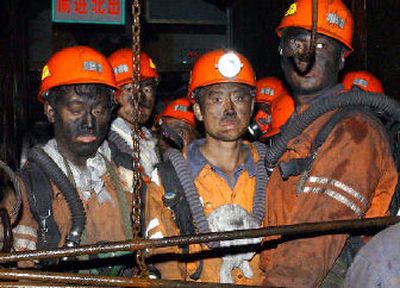Despite problems, U.S. mines still safest

MORGANTOWN, W.Va. — The number remains astonishing — 16 West Virginia coal miners dead in a month, 13 of them trapped underground by an explosion, awaiting rescuers who came too late for all but one.
The string of back-to-back, highly publicized tragedies has shaken the No. 2 coal-producing state and the No. 2 coal-producing nation to the core. Anguished families are wondering what went wrong, politicians are demanding new laws, and labor leaders are asking why technology has largely passed them by.
But coal mine accidents in China, the world’s top producer, kill an average of 16 workers a day.
“Overall, U.S. mine health and safety — it’s still the envy of the world,” says Raja Ramani, a professor of mining engineering at Penn State University.
In many ways, experts say the U.S. coal industry is the model to emulate, with safety laws on the books, a federal agency charged with enforcing them and well-funded, health-oriented research. But a false sense of security may have set in as deaths plummeted — from 260 in 1970 to just 22 last year.
With fewer people dying, coal companies had little reason to change what they were doing, says Larry Grayson, mining engineering professor at the University of Missouri-Rolla. With no financial incentive, manufacturers of safety equipment had no motivation to modernize. And with little proof that emerging technology would work as promised, most companies were reluctant to invest.
Opportunities to take advantage of the latest in safety technology were lost, from emerging underground communications systems and tracking devices to chambers where miners with no hope of escape could hunker down and await rescue.
“I truly believe that as an institution, we were lulled into thinking that we were improving,” Grayson says. “Then all of a sudden, this sequence of events in January said, ‘Wait a minute, you’ve got a problem.’ It slammed everyone right between the eyes.”
Until Jan. 2, few people thought about the 42,000 U.S. miners who toil underground, digging coal to produce half the nation’s electricity. But that day, an explosion at International Coal Group’s Sago Mine trapped a crew of 13 hundreds of feet underground. Twelve men died, and the one survivor must learn to walk and talk again.
The television satellite trucks had barely left West Virginia when a second accident killed two miners in a conveyor belt fire at Aracoma Coal’s Alma No. 1 mine. Days later, two more men died in separate accidents.
Now, for the third time in a century, tragedy in West Virginia could reshape regulations.
The United Mine Workers of America has ideas. It says every underground mine should have an onsite rescue team and MSHA should bar companies from using fresh air escapeways to house conveyor belts, which pose a fire hazard.
Miner Joe Reynolds, a miner at Peabody’s Federal No. 2 mine in Fairview, says MSHA should inspect mines daily instead of four times a year and stop granting waivers on many safety regulations.
“Mining laws are the minimum you can do and get by and be safe. It’s a very thin margin for error,” he says.